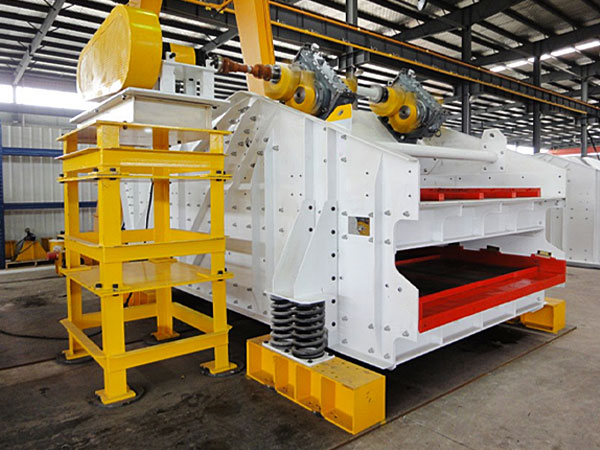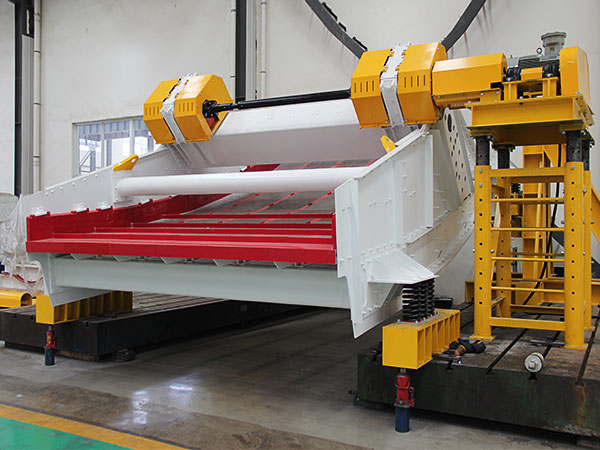Summary of Vibrating Screen Mesh Size Chart
A vibrating screen mesh size chart is a crucial tool for selecting the right screen for various material separation applications. It helps you understand the relationship between “mesh number” (or mesh count) and the actual physical “aperture” or opening size of the screen.
Vibrating Screen Mesh Size Chart

Understanding Mesh Size:
Mesh Number (or Mesh Count): This refers to the number of openings per linear inch of screen.
Higher mesh number = Smaller openings = Finer particles
Lower mesh number = Larger openings = Coarser particles
Aperture Size: This is the actual physical dimension of the opening between the wires in the mesh. It’s typically expressed in millimeters (mm), micrometers (µm or microns), or inches.
Wire Diameter: The thickness of the wire used to weave the mesh. This affects the open area percentage.
Open Area Percentage: This is the ratio of the open space (aperture) to the total mesh area. A higher open area generally means better flow and throughput.
Key Standards:
While there isn’t one universal standard, common ones include:
US Sieve Size (ASTM E11): This is widely adopted, especially in countries like China for exported vibrating screens.
Tyler Standard: Another common standard, sometimes used interchangeably with US Mesh for abrasive grit.
ISO Standards: International standards also exist.
Example of a Typical Mesh Size Chart (Simplified):

| US Mesh | Aperture (mm) | Aperture (microns) | Aperture (inches) | Wire Diameter (mm) |
| 2 | 9.5 | 9500 | 0.374 | (Varies) |
| 4 | 4.75 | 4750 | 0.187 | (Varies) |
| 8 | 2.36 | 2360 | 0.0937 | (Varies) |
| 10 | 2 | 2000 | 0.0787 | (Varies) |
| 20 | 0.85 | 850 | 0.0331 | (Varies) |
| 30 | 0.6 | 600 | 0.0234 | (Varies) |
| 40 | 0.425 | 425 | 0.0165 | (Varies) |
| 60 | 0.25 | 250 | 0.0098 | (Varies) |
| 80 | 0.18 | 180 | 0.007 | (Varies) |
| 100 | 0.15 | 150 | 0.0059 | (Varies) |
| 200 | 0.075 | 75 | 0.0029 | (Varies) |
| 325 | 0.045 | 45 | 0.0017 | (Varies) |
| 400 | 0.038 | 38 | 0.0015 | (Varies) |
| 500 | 0.025 | 25 | 0.001 | (Varies) |
How to Read and Interpret:
Find your desired particle size: If you need to separate particles smaller than a certain size (e.g., 2 mm), find that aperture size in the chart.
Identify the corresponding mesh number: The chart will show you the mesh number that creates that opening. In the example above, 2 mm corresponds to a 10 mesh screen.
Consider the wire diameter: While not always explicitly listed in every simplified chart, remember that the wire diameter affects the open area. Thicker wires for the same mesh number will result in a smaller open area.
Microns vs. Mesh: For very fine screening (typically below 325 mesh), micron size is often used directly as the mesh number becomes less practical.
Factors Influencing Mesh Selection (Beyond Just Size):
Beyond the mesh size itself, several other factors are critical when choosing a vibrating screen mesh:
Material Characteristics:
Particle Size Distribution: Crucial for determining the cut point.
Material Type: Abrasive materials (granite) need durable mesh (high-tensile steel), sticky/clayey materials might need polyurethane or rubber to prevent clogging, and lightweight materials (wood chips) might use larger apertures.
Moisture Content: Wet or sticky materials may require self-cleaning meshes or coarser apertures to prevent blinding.
Particle Shape: Flaky or elongated materials might require slotted mesh instead of square.

Screening Efficiency and Throughput:
Larger apertures offer higher capacity but lower precision.
Smaller apertures offer better precision but reduced throughput.
Open Area Percentage: Higher open area generally means better flow, especially for coarse materials.
Mesh Material:
Carbon Steel: General purpose, low cost.
Stainless Steel: For corrosive or wet environments.
Polyurethane: Excellent for sticky materials, good wear resistance, and noise reduction.
Rubber: For heavy impact and abrasion resistance, also reduces noise.
Perforated Plate: For high open area and strength in heavy-duty scalping.
Vibrating Screen Type and Design: Inclined screens, horizontal screens, frequency of vibration, and amplitude all play a role in how a given mesh performs.
Number of Decks: Multi-deck screens allow for various separations at different mesh sizes.
Where to Find Specific Charts:
Most vibrating screen manufacturers (e.g., Haiside,McLanahan, Metso, Sanyuantang, Boedon, Cleveland Vibrator) provide their own detailed mesh size charts and selection guides in their product literature or on their websites. It’s always best to consult the manufacturer’s recommendations for your specific application.



